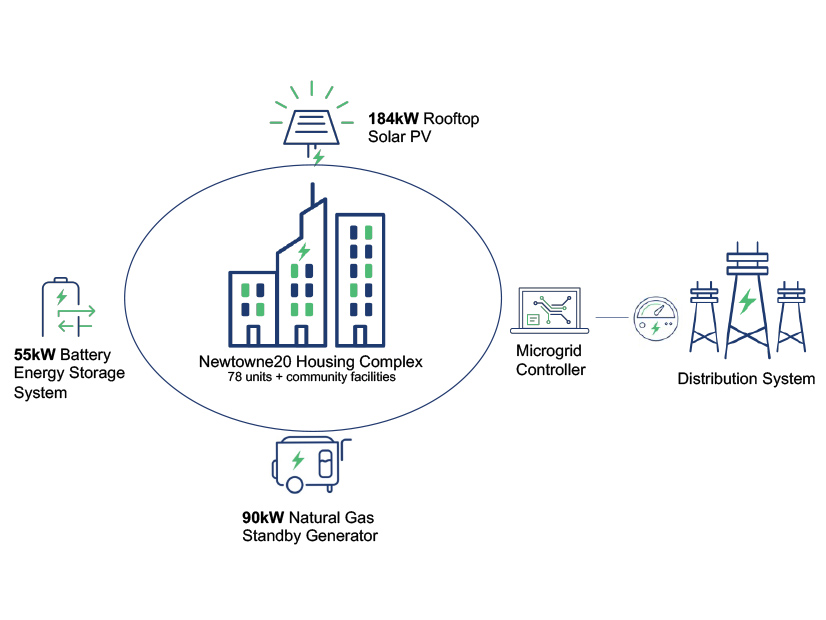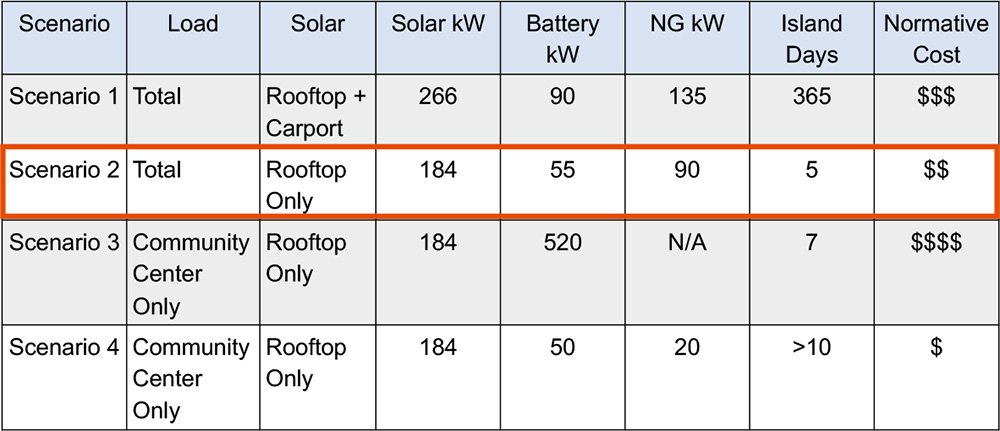
All microgrids may be different, but the process of developing one can be standardized.
That was one of the takeaways of a microgrid feasibility study by Baltimore Gas & Electric (BG&E), officials of Annapolis, Md., and the Smart Electric Power Alliance (SEPA) for a public housing development now under construction.
Funded by a $100,000 grant from the Maryland Energy Administration, the collaborators considered four scenarios for the Newtowne 20 public housing project, which the Housing Authority of the City of Annapolis (HACA) is redeveloping after razing a 1970s-era project that originally stood on the site. Residents are expected to move into the 78-unit housing project next spring.
Whether the microgrid will be built is uncertain. SEPA delivered a preliminary report to MEA a few weeks ago, and a project team of BG&E, HACA and property developer Pennrose are considering potential business and financial models. They hope to seek funding from the Federal Emergency Management Agency’s Building Resilient Infrastructure and Communities program or other funding sources.
Regardless, participants told SEPA’s Grid Evolution Summit last week that they learned a lot from the exercise.
“This is what we do — help utilities learn how to fish,” Jared Leader, SEPA’s senior manager of research and industry strategy, said of SEPA’s role in the project. “This gets under the hood for microgrids, so maybe we can develop a template we can use for future projects.”

The centerpiece of the feasibility study process was stakeholder engagement, which began with kickoff meetings involving city officials, HACA, environmental consultants, residents and Pennrose in the summer of 2020. “The stakeholder engagement is important,” said Justin Felt, BG&E’s manager of strategic planning. “You want people to stand up and say they support it.”
“The width and breadth of the stakeholder pool that the team put together was impressive,” said Jennifer Adams, HACA’s director of development. “We had all different backgrounds. Education was important, so that all became familiar with the basics.”
Stakeholders were presented with four scenarios, including the ability of the entire community to “island” during grid disturbances or limiting that capability to a community center, where residents could recharge their phones and access the Internet. The participants also considered whether to include rooftop and carport solar and whether to include a natural gas generator for backup.
Because not all stakeholders can understand all the engineering details, Felt said, “it’s important to boil it down, and not give them 20 options and tons of footnotes.”

Ultimately, the team settled on a 184-kW rooftop solar system with a 55-kW battery and a 90-kW natural gas generator that could provide five days of islanding capability for the entire development.
“It was a surprise,” said Leader. “We went into it thinking that natural gas would be a non-starter, but I remember that the mayor’s office … was keen on including some of that in a minimal amount to reduce the cost and to increase the duration of the ability of this site to island.
“We were thinking maybe the entire facility wouldn’t be served; it would just be the community center,” he added. “But the stakeholders really wanted to see” coverage for all the homes and the community center.
“One of [the] barriers identified through the study was the difficulty in passing savings on to the end user due to complex HUD regulations on how utilities feed into affordable rents,” Adams said in an email after the presentation. “So, there is no cost benefit to residents. However, residents would directly benefit from energy resiliency in the case of any power interruption.” This was attractive to the residents, who had experienced frequent power outages in the old buildings, she said.
Learning Opportunity for Utility
BG&E had applied to the Maryland Public Service Commission several years ago for permission to build its own microgrid, but the commission did not approve it and recently rejected fellow Exelon (NASDAQ:EXC) utility Pepco’s microgrid proposal as well, said Felt.
BG&E would not be the owner of the Newtowne 20 microgrid, he said in an interview with NetZero Insider. “Some distribution infrastructure in front of the meter would need to be owned by the utility. But the natural gas generation [planned as a backup source of power] would not be owned by us.
“The purpose of this project … is to get a sense of economics, what the technical details would look like,” he added. “With this feasibility study we can gain some learnings, especially around stakeholder engagement.”
“This is a perfect example of an energy project that can really advance some of the equity, environmental and social justice goals within communities, as well as resiliency needs and sustainable energy, to populations that have historically been left out,” Leader said in an interview. “It’s still nascent, and utilities are still grappling with what microgrids are and what their role should be. It’s an interesting pilot to demonstrate BG&E’s role and their strategy in working on this.”

